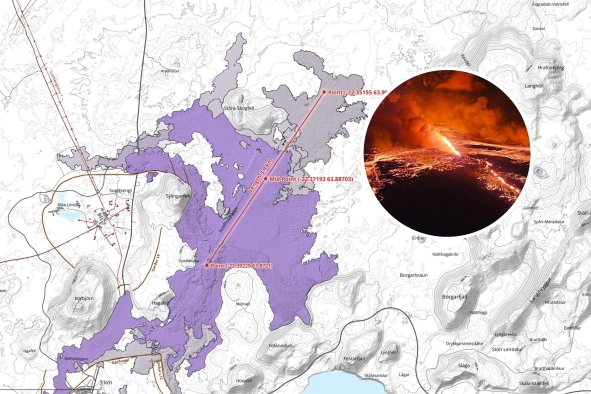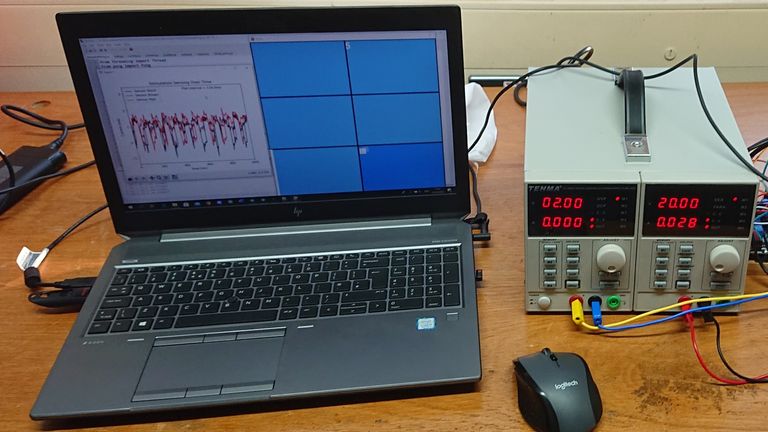Earth's calm and cool lunar companion may indeed once have been a roiling ball of molten rock, new research has found.
The moon has been long theorized to have formed due to a Mars-sized planet named Theia slamming into the early Earth some 4.5 billion years ago, with the remains of the collision eventually coming together to form a ball of molten rock, and slowly cooling into the moon we have today.
Fresh evidence supporting this dramatic history comes from data gathered by the Pragyan rover of India's recent Chandrayaan-3 mission, according to a new paper in the journal Nature.
In the paper, the researchers describe how the Pragyan rover made 23 measurements around three hundred feet of the southern lunar highlands, further south than any other lunar lander had taken samples.
Using a tool named the Alpha Particle X-ray Spectrometer (APXS), Pragyan was able to analyze the elements contained within these lunar soil samples, which revealed that the chemical composition of the regolith around the lander was fairly consistent, mainly consisting of ferroan anorthosite.
According to the researchers, the chemical makeup of the lunar south pole regolith was also found to be intermediate between that of samples gathered by the US Apollo 16 mission in 1972 and the samples returned by the Soviet Union's Luna-20 mission in the same year, both collected from regions of the Moon's equator.
The similarity in chemical composition across these samples, despite being taken from distant regions of the Moon, reinforces the theory that a global magma ocean once coated the Moon in its early history.
This theory, known as the lunar magma ocean (LMO) model, describes how the debris from the impact of Theia coalesced to form the moon, with the energy from this event causing the newly formed moon to be extremely hot with a molten surface. As the magma ocean began to cool, minerals with different densities are thought to have crystallized out of the molten material, with denser minerals like olivine and pyroxene sinking to form the moon's mantle, while lighter minerals, such anorthosite, floated to the surface and formed the moon's crust.
One of the key predictions of the LMO model is that the lunar highlands crust is mostly made of ferroan anorthosite, having floated to the surface of the molten ocean. Therefore, these findings of ferroan anorthosite by Pragyan in the southern lunar highlands supports this theory.
"The 23 measurements in the vicinity of the Chandrayaan-3 landing site show that the local lunar terrain in this region is fairly uniform and primarily composed of ferroan anorthosite (FAN), a product of the lunar magma ocean (LMO) crystallization," the researchers wrote in the paper.
The rover also found some traces of denser magnesium minerals that should be deeper, according to the theory, however, the researchers suggest that this could have been brought to the surface by a meteor impact.
"However, observation of relatively higher magnesium abundance with respect to calcium in APXS measurements suggests the mixing of further mafic material," the researchers said.
Do you have a tip on a science story that Newsweek should be covering? Do you have a question about the moon? Let us know via science@newsweek.com.
References
Vadawale, S. V., Mithun, N. P. S., Shanmugam, M., Basu Sarbadhikari, A., Sinha, R. K., Bhatt, M., Vijayan, S., Srivastava, N., Shukla, A. D., Murty, S. V. S., Bhardwaj, A., Acharya, Y. B., Patel, A. R., Adalaja, H. L., Vaishnava, C. S., Saiguhan, B. S. B., Singh, N., Kumar, S., Painkra, D. K., ... Amitabh. (2024). Chandrayaan-3 APXS elemental abundance measurements at lunar high latitude. Nature. https://doi.org/10.1038/s41586-024-07870-7
Disclaimer: The copyright of this article belongs to the original author. Reposting this article is solely for the purpose of information dissemination and does not constitute any investment advice. If there is any infringement, please contact us immediately. We will make corrections or deletions as necessary. Thank you.



